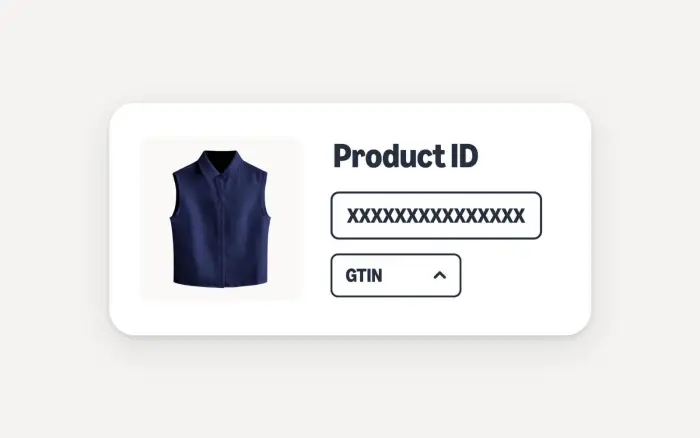How to track FBA shipments
16 January 2025

There are many things you need to organize and consider as you’re sourcing products and setting up an online storefront. One of the most common to-dos for sellers is to ensure products have Global Trade Identification Numbers, or GTINs. Also known as product IDs, GTINs help identify your unique product, share information about your product, track your products throughout the supply chain, and support effective inventory management.
In this article, we’ll explore:
A product ID is a series of numbers that are assigned to a product to help identify it through the supply chain as it moves from a manufacturer to a seller or retailer, and then to a customer. A GTIN, or Global Trade Item Number, is considered a product ID.
A GTIN is a globally unique number up to 14 digits long. GTINs are usually associated with scannable barcodes. You can often find a product’s GTIN under its barcode.
Products are assigned a GTIN to help differentiate them from other products so they’re easier to track. They help alleviate misidentification of products and confusion between products that may be similar, but not exact. This is especially helpful for sellers who work with a variety of distributors and deal with a wide range of products—or a large volume of products.
There are many types of GTINs. Here are the most common GTINs used to create product detail pages in the Amazon store:
Though GTINs, ASINs, and SKUs are all used to help identify products based on a series of numbers, each one serves a different purpose and function.
An ASIN—or Amazon Standard Identification Number—is a series of 10 letters and numbers used to identify products within the Amazon catalog. ASINs are created and assigned to each new product when it’s listed. They appear on product detail pages and can be used to search for specific products within the Amazon store. They can also be helpful for inventory management in Seller Central. But an ASIN isn’t able to help with product identification outside of Amazon, whereas a GTIN can be used to identify a product no matter its retailer.
A SKU, or stock keeping unit, is another collection of numbers with a scannable barcode to help track a variety of product details like price, manufacturer, and more. They’re mostly created by companies to monitor their own inventory, so the same product at a different company can have different SKUs. A GTIN differs in that it’s a standard product ID no matter where it’s sold—so while a product can have two different SKUs at two different companies, its GTIN will be the same.
GTINs are a valuable part of the ecommerce journey. Everyone from suppliers to retailers to ecommerce brands use GTINs, most commonly for:
To find a product’s GTIN, look for the barcode on your product’s packaging or cover. The number will appear above or below the barcode. Your product’s GTIN may also be on the shipping container it arrived in.
Once you have your product’s GTIN, you can use it to match an offer to an existing listing in the Amazon store, or to create a new product listing.
Learn more about creating product listings
If you source your products from a manufacturer but don’t have the GTIN, you can request the GTIN from them. If you create and own a new product yourself, you can get a GTIN through an organization called GS1.
Getting your GTIN will depend on how many products you have, or the variations of products you offer. You can license GTINs individually or apply for GTINs in bulk, which may save you money if you have numerous products. If you have an extensive range of products that need GTINs, you may be able to license a GS1 Company Prefix, which will include some standardized digits that identify your company.